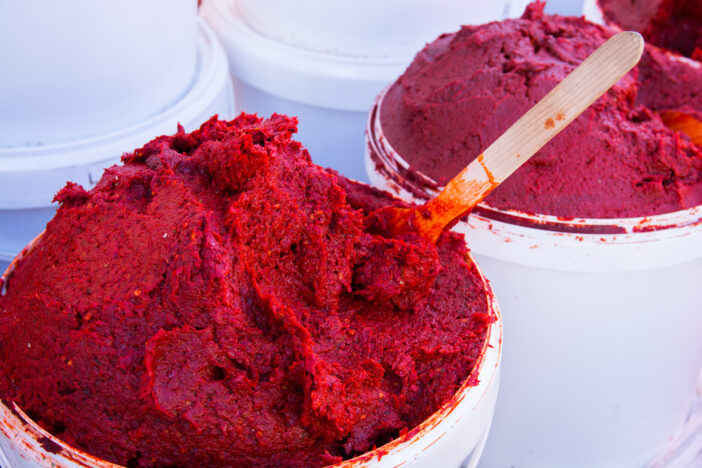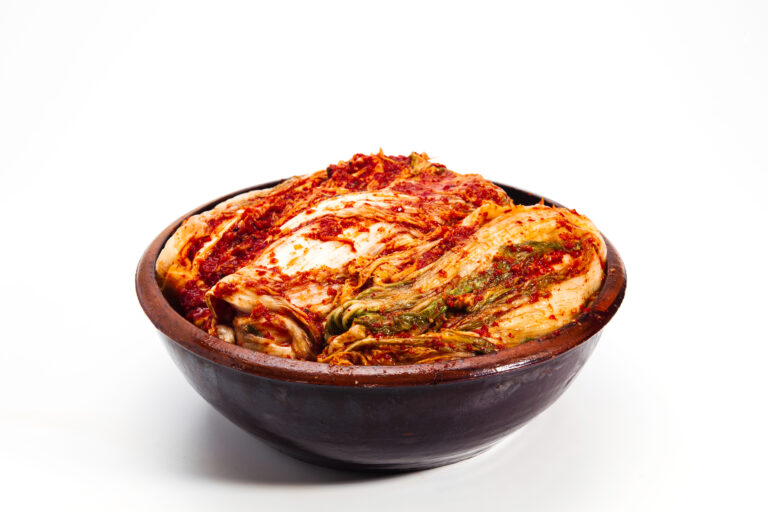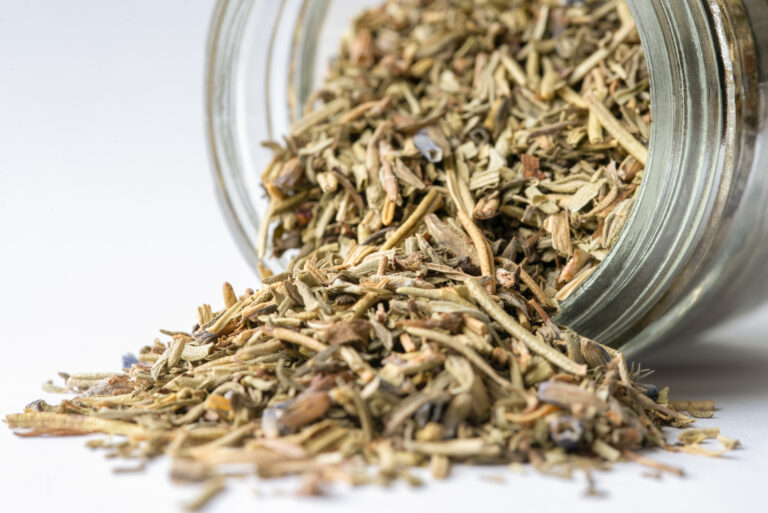4 Gochujang Substitutes to Save Your Recipe
Explore easy gochujang substitutes using ingredients like miso paste, red pepper flakes, Sriracha, soy sauce, tomato paste, Korean chili flakes, sambal oelek, and sweeteners for a flavorful alternative.

Finding a substitute for gochujang can be challenging, but several easy alternatives can deliver similar flavors. Whether you’re out of this Korean staple or looking for a milder option, there’s a solution for you.
Disclosure: As an Amazon Associate, this site earns from qualifying purchases. Thank you!
1. Miso Paste and Red Pepper Flakes

Looking for a quick gochujang alternative? Miso paste and red pepper flakes might be your best bet.
Benefits of Using Miso Paste
Miso paste delivers the essential umami flavor. It’s fermented, like gochujang, providing a similar depth. It’s easily accessible in grocery stores. With various types (e.g., white, yellow, red), you can choose one that suits your taste preference. Miso paste is versatile and can be used in many recipes.
How to Combine with Red Pepper Flakes
Mixing miso paste with red pepper flakes is simple. Start by blending 1 tablespoon of miso paste with 1 teaspoon of red pepper flakes. Adjust the heat by adding more red pepper flakes if desired. For a sweeter profile, add a pinch of sugar or honey. This combination offers a quick, flavorful substitute for gochujang in any dish.
2. Sriracha and Soy Sauce

Looking for an easy gochujang substitute? Sriracha and soy sauce make a great combo that’s simple to whip up.
Advantages of Sriracha for Heat
Use Sriracha for its balanced heat. This popular hot sauce gives you a consistent kick without overpowering your dish. It’s readily available and packs the right amount of spice.
Pairing with Soy Sauce for Umami
Combine soy sauce to enhance umami. Soy sauce adds depth and a savory note, mimicking gochujang’s fermented soybean profile. Mix equal parts Sriracha and soy sauce for a versatile substitute.
3. Tomato Paste and Korean Chili Flakes

Running low on gochujang but still craving that spicy-sweet kick? Use tomato paste and Korean chili flakes as a quick alternative.
Using Tomato Paste as a Base
Tomato paste is readily available and provides the rich, thick texture needed to mimic gochujang. It’s versatile, blending well with various ingredients to create a complex flavor. Use it as the primary base to ensure your sauce coats and sticks to your dishes just like traditional gochujang.
Adding Korean Chili Flakes for Authentic Flavor
Korean chili flakes (gochugaru) offer the authentic heat and unique smokiness essential in Korean cuisine. Combine these flakes with tomato paste to replicate gochujang’s distinct flavor profile. Adjust the quantity based on your spice tolerance to maintain control over the heat level.
Utilize this combination to create a quick and flavorful substitute that works in stews, marinades, and stir-fries.
4. Sambal Oelek and Sweeteners

When you’re out of gochujang, a mix of sambal oelek and sweeteners can save your dish. Let’s explore how.
Key Features of Sambal Oelek
- Pure Chili Flavor: Sambal oelek offers a straightforward chili taste without the added complexities found in other sauces.
- Vinegar Tang: The slight vinegar tang in sambal oelek provides a pleasant bite that cuts through rich flavors.
- Versatile Heat: It’s versatile enough to be used in everything from soups to marinades, keeping the heat consistent.
Sweeteners to Use
- Brown Sugar: Adds a depth of flavor with its molasses content, resembling gochujang’s natural sweetness.
- Honey: Brings a floral note that can enhance the umami elements in your dish.
- Maple Syrup: Offers a unique, earthy sweetness that complements sambal oelek’s straightforward heat.
Usage Tip: Use this combo in equal parts, adjusting to taste. This easy substitute will help you keep the Korean flavors intact in your recipes.
Special Considerations When Substituting Gochujang

Adjusting for Texture Preference
When substituting gochujang, it’s crucial to think about texture. Gochujang has a thick, sticky consistency. If you’re using alternatives like Sriracha or Sambal Oelek, note that they’re more liquid. To thicken, consider mixing them with a bit of cornstarch or reducing them in a saucepan until you reach the desired consistency.
Balancing Spices and Sweetness
Gochujang is both spicy and slightly sweet. When using substitutes, balance these elements. For example, if you’re using miso paste and red pepper flakes, add a teaspoon of honey or sugar to mimic gochujang’s sweetness. Taste your substitute and adjust with more spice or sweetener as needed to achieve the right balance.
This refined section maintains coherence with the previous content while providing actionable advice succinctly.
Exploring Common Ingredients in Gochujang
Understanding the key components of gochujang helps find the best substitutes for this flavorful Korean condiment.
The Role of Red Chili Peppers
Red chili peppers give gochujang its signature heat. They’re the source of its spicy kick and vibrant red color. When looking for a substitute, focus on ingredients like cayenne pepper or red pepper flakes to mimic this essential characteristic.
The Importance of Fermented Soybeans
Fermented soybeans provide umami depth. They add a savory, complex flavor that makes gochujang unique. Miso paste is an excellent alternative since it’s also made from fermented soybeans.
The Sweetness of Glutinous Rice
Glutinous rice contributes a subtle sweetness. It balances the heat and umami, making the sauce well-rounded. Look for a touch of sugar, honey, or even mirin in your substitutes to replicate this sweetness.
By understanding these components, you can recreate gochujang’s complex flavor profile with available ingredients.
Frequently Asked Questions
What is gochujang?
Gochujang is a Korean fermented chili paste known for its unique blend of sweetness, spiciness, and umami. It is made from red chili peppers, glutinous rice, fermented soybeans, and salt.
What can I use as a substitute for gochujang?
You can use a mix of miso paste and red pepper flakes, Sriracha and soy sauce, tomato paste with Korean chili flakes, or sambal oelek combined with sweeteners to mimic gochujang’s flavor profile.
How do I replicate the heat in gochujang?
To replicate the heat, you can use cayenne pepper or red pepper flakes. Adjust the amount based on your spice tolerance.
How can I achieve the umami flavor in gochujang substitutes?
Fermented soybeans in gochujang provide umami. Using miso paste in your substitutes can help replicate this depth of flavor.
What can I do to get the sweetness found in gochujang?
You can use sweeteners like sugar or honey in your substitutes to achieve the sweetness characteristic of gochujang.
Are there special considerations when substituting gochujang in a recipe?
Yes, consider the texture and balance the spices and sweetness in the substitutes to match your preferences. Adjust proportions to achieve the desired flavor complexity.
Can I use store-bought sauces as gochujang substitutes?
Yes, store-bought sauces like Sriracha can be mixed with soy sauce to create a quick and convenient gochujang substitute. Adjust the quantities to best match the taste.






